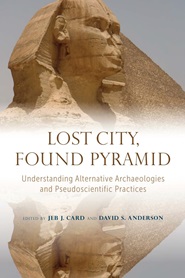| Main » Ad Board » ДРЕВЕН ИЗТОК- ОБЩИ ВЪПРОСИ » Археология |
| 23.08.2020, 07:04 | |
Сборникът есета представлява академичен анализ на псевдонауката и "алтернативните" археологии и хронологии като феномен на съвременната популярна култура. В първата част ще намерим обзор на различни фантастични "находки" и произволни наукообразни интерпретации: от "загубени в джунглите градове" на Мезоамерика до спора за "черните олмеки и египтяни" между антрополозите и афроцентристите, от "пирамидите" в Босна и Херцеговина като инструмент за лов на туристи до "пресъздаването на света" от фундаменталистите-креациионисти и "лова на призраци" в модерното риалити-шоу. Втората част е мултидисциплинарен анализ на явлението: причини за неговия успех и поява, средства за разпространение, таргет-групи и начин за академично противопоставяне от позициите на научната археология, антропология и историография. - на английски език, от MEGA, формат PDF.Сваляне с ляв бутон (downloading by left button) и после през бутона Download.АЛТЕРНАТИВЕН ЛИНК / ALTERNATIVE LINK: - на английски език, от Google Drive,формат PDF. Сваляне с ляв бутон (downloading by left button) от страницата на предоставящия сървър, после през бутона стрелка надолу/after by down arrow button.
| |
| Views: 399 | Placed till: 23.09.2020 | Rating: 0.0/0 | |

